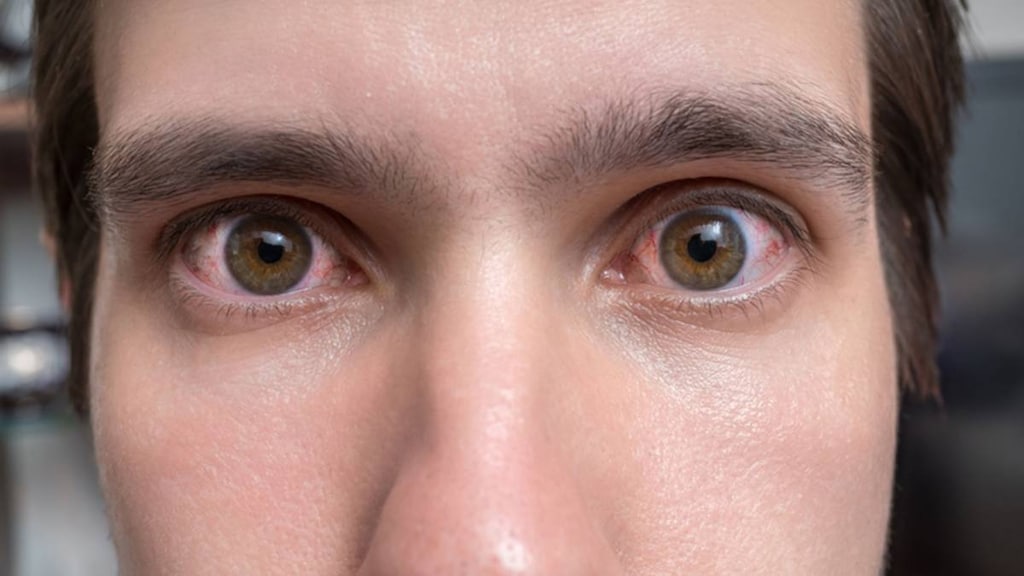Dosage Forms
Excipient information presented when available (limited, particularly for generics); consult specific product labeling.
Solution, Ophthalmic, as tromethamine:
Acular: 0.5% (5 mL) [contains benzalkonium chloride, edetate disodium]
Acular LS: 0.4% (5 mL) [contains benzalkonium chloride, edetate disodium]
Generic: 0.4% (5 mL); 0.5% (3 mL, 5 mL, 10 mL)
Solution, Ophthalmic, as tromethamine [preservative free]:
Acuvail: 0.45% (30 ea)
Pharmacology
Mechanism of Action
Inhibits prostaglandin synthesis by decreasing the activity of the enzyme, cyclooxygenase 1 and 2, which results in decreased formation of prostaglandin precursors.
Pharmacokinetics/Pharmacodynamics
Absorption
Following instillation of ketorolac 0.5% ophthalmic drops 3 times/day, the mean plasma concentrations of ketorolac are ~4% to 8% of the minimum concentration observed following oral doses of 10 mg 4 times/day.
Use: Labeled Indications
Postoperative ocular inflammation following cataract extraction (0.5% solution): Treatment of postoperative inflammation in patients who have undergone cataract extraction.
Postoperative ocular pain following corneal refractive surgery (0.4% solution): Reduction of ocular pain and burning/stinging following corneal refractive surgery.
Postoperative ocular pain/inflammation following cataract surgery (0.45% solution): Treatment of pain and inflammation following cataract surgery.
Seasonal allergic conjunctivitis (ocular itching) (0.5% solution): Temporary relief of ocular itching caused by seasonal allergic conjunctivitis.
Contraindications
Hypersensitivity to ketorolac or any component of the formulation.
Documentation of allergenic cross-reactivity for NSAIDs is limited. However, because of similarities in chemical structure and/or pharmacologic actions, the possibility of cross-sensitivity cannot be ruled out with certainty.
Dosage and Administration
Dosing: Adult
Postoperative ocular inflammation following cataract extraction (0.5% solution): Ophthalmic: Instill 1 drop into affected eye(s) 4 times daily beginning 24 hours after surgery; continue for 2 weeks
Postoperative ocular pain following corneal refractive surgery (0.4% solution): Ophthalmic: Instill 1 drop into affected eye(s) 4 times daily as needed for up to 4 days after surgery
Postoperative ocular pain/inflammation following cataract surgery (0.45% solution): Ophthalmic: Instill 1 drop into affected eye(s) 2 times daily beginning 24 hours before surgery and continuing on the day of surgery; continue for 2 weeks after surgery
Seasonal allergic conjunctivitis (ocular itching) (0.5% solution): Ophthalmic: Instill 1 drop into affected eye(s) 4 times daily
Dosing: Pediatric
Postoperative inflammation following cataract extraction (0.5% solution): Children ≥2 years and Adolescents: Ophthalmic: Instill 1 drop into affected eye(s) 4 times daily starting 24 hours after cataract surgery and through 14 days after surgery
Postoperative pain, burning, and stinging following corneal refractive surgery (0.4% solution): Children ≥3 years and Adolescents: Ophthalmic: Instill 1 drop into affected eye 4 times daily as needed for up to 4 days after corneal refractive surgery
Seasonal allergic conjunctivitis (0.5% solution): Children ≥2 years and Adolescents: Ophthalmic: Instill 1 drop into affected eye(s) 4 times daily
Administration
For topical ophthalmic use only. Remove contact lenses prior to administration and wait 10 minutes before reinserting. May be used with other eye drops. If using more than 1 ophthalmic product, wait at least 5 minutes between application of each medication. Minimize contamination by not touching the eyelids or surrounding areas with the dropper tip; keep bottle tightly closed when not in use. Also, to minimize the risk of infection following surgery of both eyes, two separate bottles of eye drops (one for each eye) should be used; instruct patients not to use the same bottle for both eyes.
Storage
0.4% and 0.5% solution: Store at 15°C to 25°C (59°F to 77°F). Protect from light.
0.45% solution: Store at 15°C to 30°C (59°F to 86°F). Store vials in pouch with ends folded; protect from light.
Drug Interactions
Corticosteroids (Ophthalmic): Nonsteroidal Anti-Inflammatory Agents (Ophthalmic) may enhance the adverse/toxic effect of Corticosteroids (Ophthalmic). Healing of ophthalmic tissue during concomitant administration of ophthalmic products may be delayed. Exceptions: Loteprednol. Monitor therapy
Prostaglandins (Ophthalmic): Nonsteroidal Anti-Inflammatory Agents (Ophthalmic) may diminish the therapeutic effect of Prostaglandins (Ophthalmic). Nonsteroidal Anti-Inflammatory Agents (Ophthalmic) may enhance the therapeutic effect of Prostaglandins (Ophthalmic). Monitor therapy
Adverse Reactions
>10%: Ophthalmic: Burning sensation of eyes (transient; Acular and Acular LS: 20% to 40%)
1% to 10%:
Central nervous system: Headache (1% to 6%)
Hypersensitivity: Hypersensitivity reaction
Ophthalmic: Blurred vision (1% to 6%), conjunctival hyperemia (1% to 6%), corneal edema (1% to 6%), eye pain (1% to 6%), increased intraocular pressure (1% to 6%), lacrimation (1% to 6%), corneal infiltrates (1% to 5%), ocular edema (1% to 5%), eye irritation, iritis, ophthalmic inflammation, superficial keratitis, superficial eye infection
<1%, postmarketing, and/or case reports: Bronchospasm, corneal erosion, corneal perforation, corneal thinning (including corneal melt), corneal ulcer, dry eye syndrome, epithelial keratopathy (breakdown), exacerbation of asthma, keratitis (ulcerative)
Warnings/Precautions
Concerns related to adverse effects:
- Aspirin/NSAID sensitivity: Use with caution in patients with previous sensitivity to acetylsalicylic acid, phenylacetic acid derivatives, and other NSAIDs including patients who experience bronchospasm, asthma, rhinitis, or urticaria following NSAID or aspirin therapy.
- Corneal effects: May cause keratitis; continued use may cause severe corneal adverse effects, including corneal thinning, erosion, perforation, or ulceration; may result in loss of vision. Discontinue use in patients with evidence of corneal epithelial damage.
- Delayed healing: Healing time may be slowed or delayed. Use with caution in patients receiving concomitant topical steroid therapy due to an increased risk for healing problems.
Disease-related concerns:
- Bleeding disorders: Use with caution in patients with a predisposition to bleeding (bleeding tendencies or medications which interfere with coagulation). Increased intraocular bleeding (including hyphema) has been reported following surgery.
- Diabetes: Use with caution in patients with diabetes mellitus; may be at risk of corneal adverse events, potentially resulting in loss of vision.
- Ocular disease: Use with caution in patients with complicated ocular surgeries, corneal denervation, corneal epithelial defects, ocular surface disease, or repeat ocular surgeries (within a short timeframe); may be at risk of corneal adverse events, potentially resulting in loss of vision.
- Rheumatoid arthritis: Use with caution in patients with rheumatoid arthritis; may be at risk of corneal adverse events, potentially resulting in loss of vision.
Special populations:
- Postsurgical patients: To minimize the risk of infection following surgery of both eyes, two separate bottles of eye drops (one for each eye) should be used; instruct patients not to use the same bottle for both eyes.
Dosage form specific issues:
- Benzalkonium chloride: May contain benzalkonium chloride as a preservative.
Other warnings/precautions:
- Appropriate use: The safety and efficacy of Acular LS (0.4% solution) has not been established in postcataract surgery patients.
- Contact lenses: Contact lenses should be removed prior to instillation (contains benzalkonium chloride which may be adsorbed by contact lens); may be reinserted after 10 minutes.
- Duration of therapy: Use for more than 1 day prior to surgery or for 14 days beyond surgery may increase risk and severity of corneal adverse events.
Pregnancy
Pregnancy Risk Factor
C
Pregnancy Considerations
Adverse events have been observed in animal reproduction studies. Systemic exposure is decreased with ophthalmic administration (concentrations are ~4% to 8% of the minimum plasma concentration following an oral dose). If ophthalmic agents are needed during pregnancy, the minimum effective dose should be used in combination with punctal occlusion to decrease potential exposure to the fetus (Samples 1988). However, because it may cause prenatal constriction of the ductus arteriosus, the manufacturer recommends that the use of ketorolac ophthalmic drops late in pregnancy be avoided.
Patient Education
What is this drug used for?
- It is used to treat eye irritation due to allergies.
- It is used to treat swelling and pain after cataract surgery.
Other side effects of this drug: Talk with your doctor right away if you have any of these signs of:
- Vision changes
- Eye pain
- Severe eye irritation
- Eye redness
- Signs of a significant reaction like wheezing; chest tightness; fever; itching; bad cough; blue skin color; seizures; or swelling of face, lips, tongue, or throat.
Note: This is not a comprehensive list of all side effects. Talk to your doctor if you have questions.
Consumer Information Use and Disclaimer: This information should not be used to decide whether or not to take this medicine or any other medicine. Only the healthcare provider has the knowledge and training to decide which medicines are right for a specific patient. This information does not endorse any medicine as safe, effective, or approved for treating any patient or health condition. This is only a brief summary of general information about this medicine. It does NOT include all information about the possible uses, directions, warnings, precautions, interactions, adverse effects, or risks that may apply to this medicine. This information is not specific medical advice and does not replace information you receive from the healthcare provider. You must talk with the healthcare provider for complete information about the risks and benefits of using this medicine.

